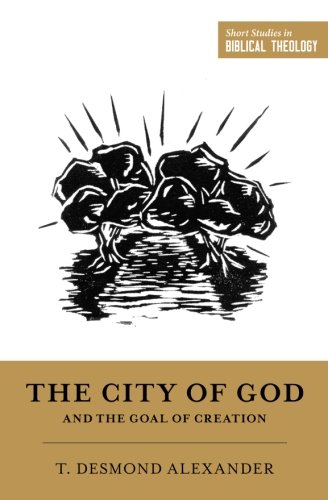A Brief Book Summary from Books At a Glance
By Mark Baker
Overview
This book examines the theme of the city of God as it is expressed in the Bible. It begins with God’s original plan: Adam and Eve were to expand the boundaries of the garden to eventually create a garden-metropolis. It ends with this goal realized through New Jerusalem, the great garden-city where God fully and finally dwells with his people. In between these two bookends, the Bible tells a wonderful story of redemption, and we can trace this story through the development of cities. Every great plot has an antagonist; in this story we see Babylon rise up as a self-acclaimed rival to God’s city. Yet even when it appears as if Babylon has won, God’s saving work shines through in promises of redemption and power from on high. This book aims to help Christians find their place in the grand story of redemption through a study of the city of God.
Table of Contents
Introduction
Chapter 1: The Godless City
Chapter 2: The Temple-City
Chapter 3: The Holy Mountain City
Chapter 4: The Royal City
Chapter 5: Envisaging a Transformed Jerusalem
Chapter 6: Hope for Jerusalem beyond Divine Judgment
Chapter 7: Seeking the City That Is to Come
Chapter 8: Anticipating New Jerusalem
Introduction
John’s vision of New Jerusalem in Revelation 21:18–20 is breathtaking. It is a city like no other. But not only is it filled with beautiful objects, New Jerusalem also represents a fitting climax of the story of redemption. “The origins of New Jerusalem are to be found in the early chapters of Genesis. As we shall discover, the garden of Eden is located at the center of a green field site where God intends to construct a holy city upon the earth” (16). The tree of life is located in both Eden and New Jerusalem. Additionally, both places represent a special location where God is present with his people.
At first glance, besides the connections given above, Eden and New Jerusalem may seem quite different. After all, Eden is a garden paradise, and the New Jerusalem is a massive city. However, the narrative supplies more similarities. First, many scholars have recognized the similarities between Eden and the tabernacle and temple in Israel. Second, God gave Adam and Eve the command to “be fruitful, multiply, fill the earth, and subdue it…” (Gen 1:28). “Eden has the potential to become a great metropolis” (20). When Adam and Eve fall into sin, it may seem as if God’s plans have been thwarted. But as the theme of the city of God develops throughout the Scriptures, we will see that God’s grace is stronger than man’s sin.
Chapter 1: The Godless City
Almost immediately after the fall of Adam and Eve, we see the development of cities. After Cain has been exiled from Eden, he builds a city and names it after his son, Enoch. “By doing so he glorifies his own offspring rather than the One who has equipped him to be a city builder” (24). This development comes to a climax at Babel. We all remember the building of the tower of Babel, but we sometimes forget that the construction project included a city and a tower (Gen 11:4). The city-builders, like Cain before them, want to make a name for themselves. “Constructed by people for people alone, Babel is a mockery of what God intended when he created humans and commanded them to fill the earth” (26).
In many ways, Babel is the prototypical godless city: First, the Hebrew word for “Babel” is the same word as “Babylon.” The events of Genesis 11 begin the long history of Babylon, the great enemy of the people of God. Second, Babel’s founder Nimrod represents a man who acts antagonistically towards God. This link between Nimrod and Babel begins another conflict in the Bible, namely, man’s kingdom versus God’s kingdom. “Due to the rebellion of Adam and Eve, God’s desire to establish his kingdom on the earth through the construction of a city is thwarted. Instead of ruling as his vice-regents, humans oppose God and establish alternative kingdoms” (28).
Chapter 2: The Temple-City
After God’s judgment at Babel, the future looks bleak. Yet God calls a man named Abram to leave his home in Ur (close to Babylon) and to sojourn to a new land. From a canonical perspective, we know that Abram (later called Abraham) was looking for the “city of the living God” or the “heavenly Jerusalem” (Heb 12:22). God leads him to the Promised Land and miraculously multiplies his descendants. As the narrative progresses, we see that God’s interactions with Abraham, Isaac, and Jacob all express the common theme reminiscent to Eden: “First, God comes and makes himself known, addressing each patriarch with words that recall the creation mandate in Genesis 1:28 for humans to be fruitful and fill the earth. Second, these. . .
[To continue reading this summary, please see below....]The remainder of this article is premium content. Become a member to continue reading.
Already have an account? Sign In
